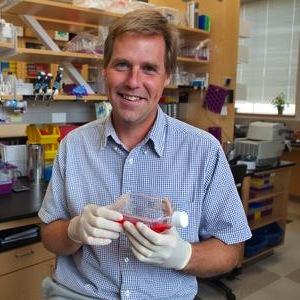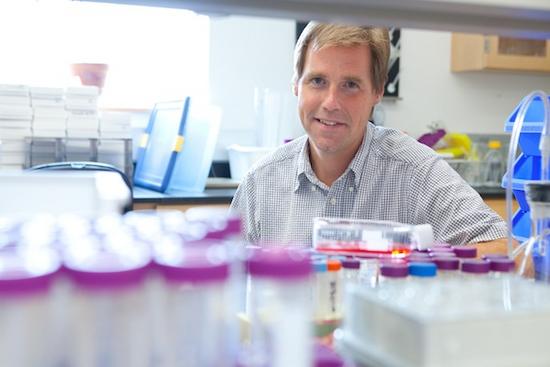
A Florida State University researcher is on a mission to explore the gene-controlling effects of addictive drugs in pursuit of new HIV treatments.
Working under the support of a $1.8 million grant from the National Institutes of Health (NIH), Florida State biologist Jonathan Dennis is studying a unique ability shared between a promising class of HIV treatments known as histone deacetylase inhibitors (HDIs) and psychostimulant drugs such as cocaine.
“Current HIV treatments do just that — they treat the disease by preventing the spread of HIV in the body, rather than eliminating the disease entirely,” Dennis said. “I want to find out how to root out those dormant HIV cells that are evading the treatment, and I believe the gene-controlling functions shared by HDIs and psychostimulant drugs hold the key to helping us do that.”
HDIs and addictive drugs such as cocaine share the ability to control gene expression through changes in the chromatin structure within DNA. In the case of HDI treatment, the chromatin changes are used to wake up dormant HIV virus cells that are hiding in the body.
Dennis believes that addictive drugs do the same thing. Dennis’ work will focus on identifying and understanding the overlapping gene changes that occur between these two types of substances, ultimately providing other researchers with the foundational information they need to turn HDI treatments into HIV cures.
Using the resources available through Florida State University’s unique Integrating Genotype and Phenotype research cluster, Dennis was able to lure the attention of the NIH and obtain the grant. Genotype is the genetic constitution of an organism while the phenotype is its appearance and functional properties.

“The Integrating Genotype and Phenotype cluster has been critical in my work to unravel the mysteries behind chromatin and gene expression through direct access to other researchers and their areas of expertise,” Dennis said.
This research cluster combines cross-disciplinary expertise in the areas of evolutionary biology, molecular biology, genomics and epigenetics to solve one of the most important problems facing biology in the 21st century — the relationship between genotype and phenotype.
“The Integrating Genotype and Phenotype cluster has been critical in my work to unravel the mysteries behind chromatin and gene expression through direct access to other researchers and their areas of expertise,” Dennis said. “Without it I would not have been able to obtain this grant and be able to focus my work on helping the scientific community find a cure for HIV.”
To learn more about the scope and purpose of Dennis’ NIH grant, visit the grant website. To learn more about Dennis, visit his Department of Biological Science Web page. To find out more about the work of the research cluster, visit Integrating Genotype and Phenotype.
Florida State University, rated RU/VH (“Research University/Very High” research activity) by the Carnegie Foundation for the Advancement of Teaching, is one of the nation’s leading research and creative-activity institutions. With nearly $204 million in external research funding in 2011 and a large collection of unique, cutting-edge scientific and performing arts facilities, Florida State offers faculty and students unparalleled opportunities to expand the frontiers of knowledge and discovery in their areas of expertise. To learn more about Florida State research, locate a subject matter expert or arrange an interview on a specific research or creative topic, contact Tom Butler at tbutler@admin.fsu.edu, or Florida State’s News and Research Communications Office at (850) 644-4030.




